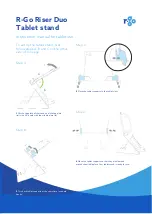
2.1.1.3.2
Transceiver Option Card Intercom Button
The intercom button on the front of the transceiver option card is accessible behind the fan module.
Pressing the intercom button toggles the intercom function between the ON and OFF states.
Figure 8: Transceiver Option Card Intercom Button (behind the fan module)
2.1.1.3.3
Transceiver Ports (Rear)
The transceiver interconnects to the backplane using a 120-pin HVDML digital connector and 8-pack
RF connector, as shown in the figure. These connections handle multiple signals including power
supply communications, power amplifier communications, fan interface, and peripheral interface. The
digital connection receive alarm data and the site controller Time Division Multiplexer (TDM) signals
are used to pass reference and control data to the base radio.
Figure 9: Transceiver Module (Backplane Connections)
Single Receiver Input
An RJ-45 Ethernet port on the backplane is cabled to a site LAN switch for this channel. The
backplane also provides an RF connection to the transceiver for receive (Rx) path A.
Dual Receiver Input
RJ-45 Ethernet ports on the backplane are cabled to corresponding ports on the site controller
backplanes (HPD). The backplane also provides RF connections to the transceiver for receive (Rx)
paths A and B (HPD and TDMA).
2.1.2
Function of the Power Amplifier Module
The power amplifier (PA) is a forced convection-cooled RF power amplifier. It accepts a low-level
modulated RF signal from the transceiver module, and amplifies it for transmission through the site
transmit antenna. Also, to complete the Cartesian correction loop (linearization method), it provides a
low-level RF feedback signal to the transceiver module to achieve the required transmitter linearity.
Transmit power output can be set using Configuration/Service Software (CSS). See
Power Values and Battery Type on page 153
MN003286A01-E
Chapter 2: GTR 8000 Base Radio Theory of Operation
64
















































